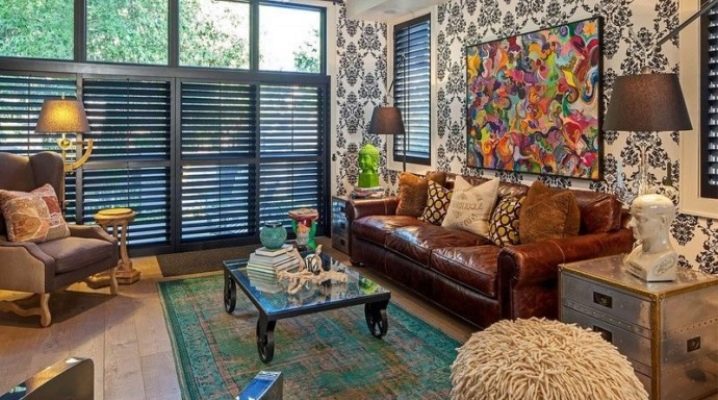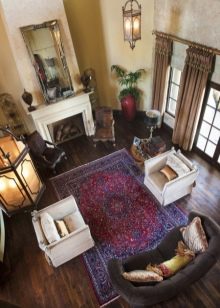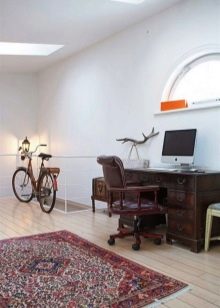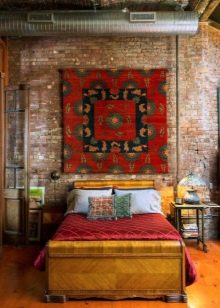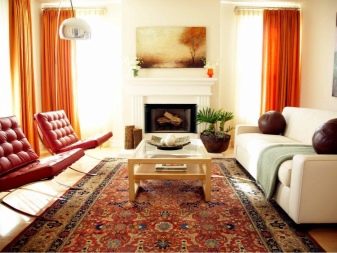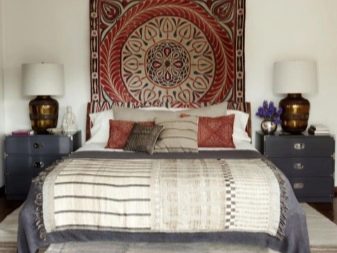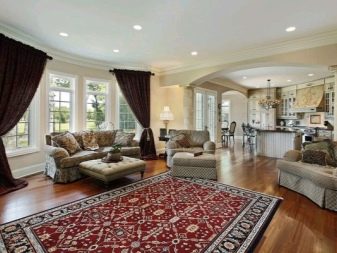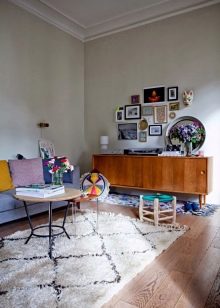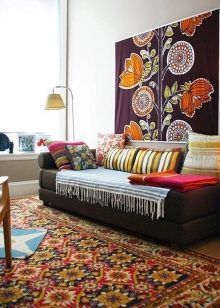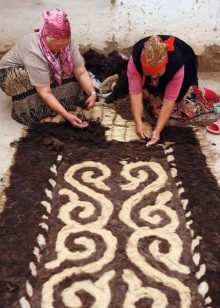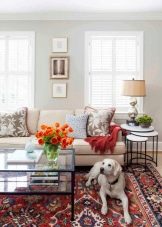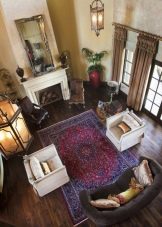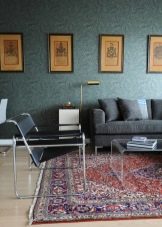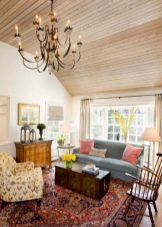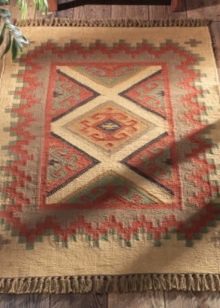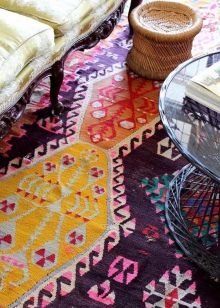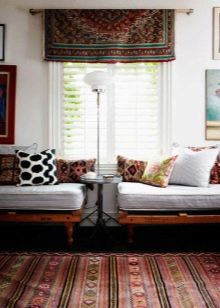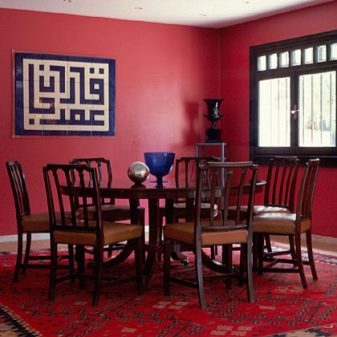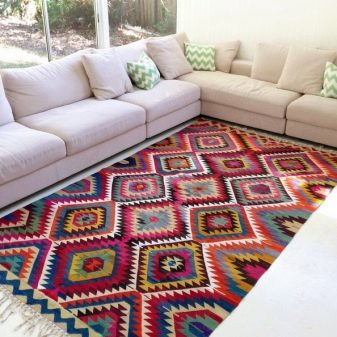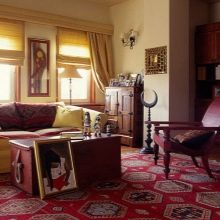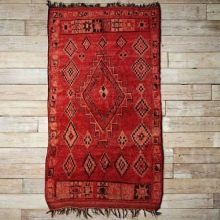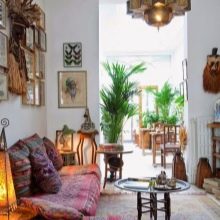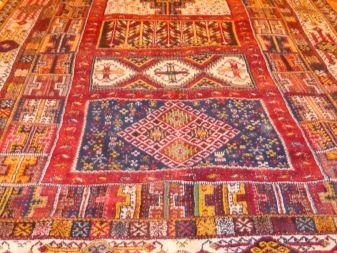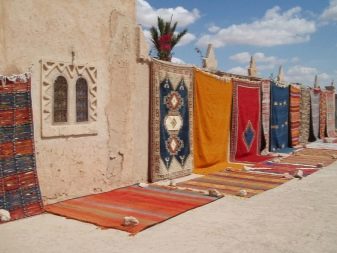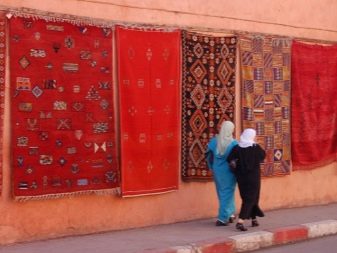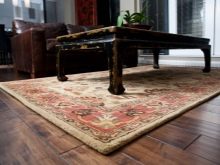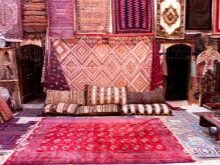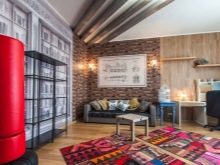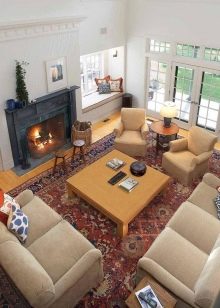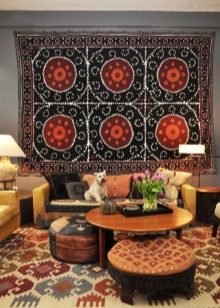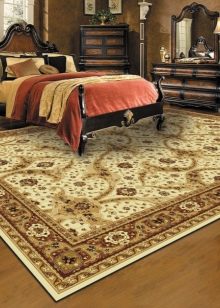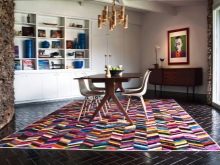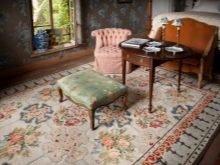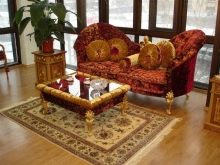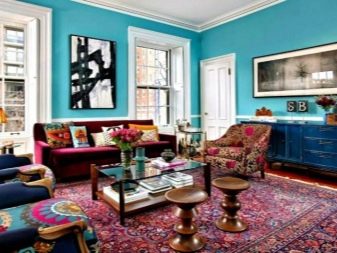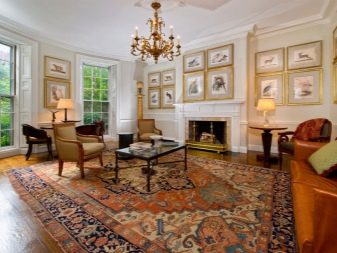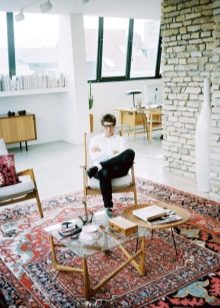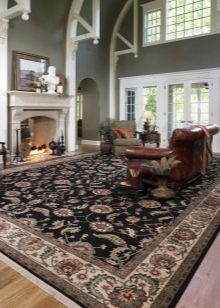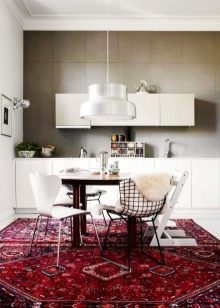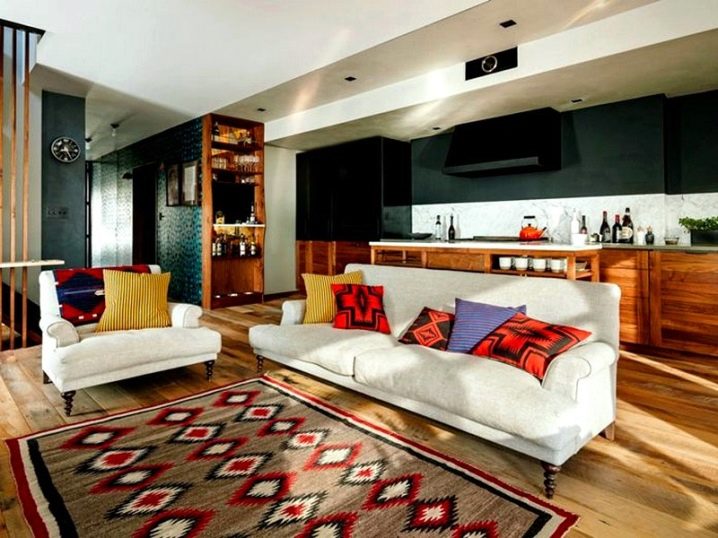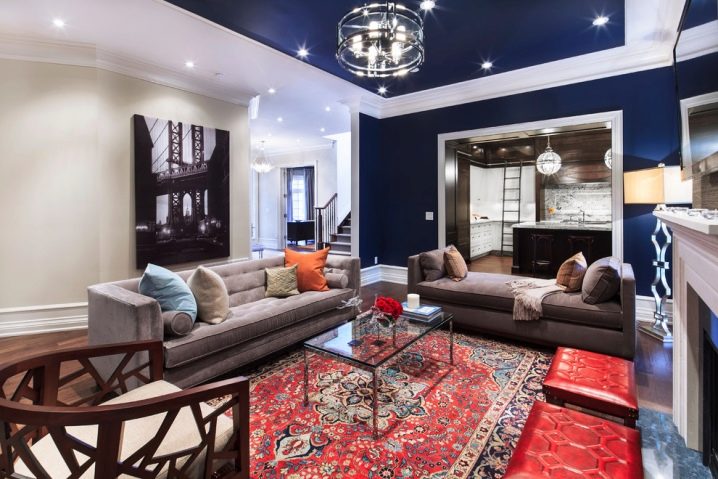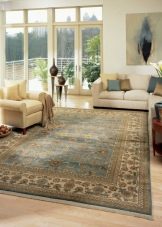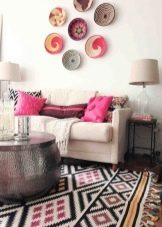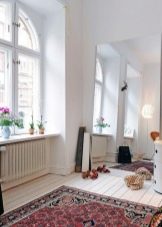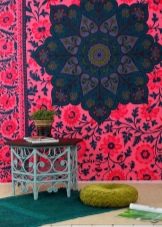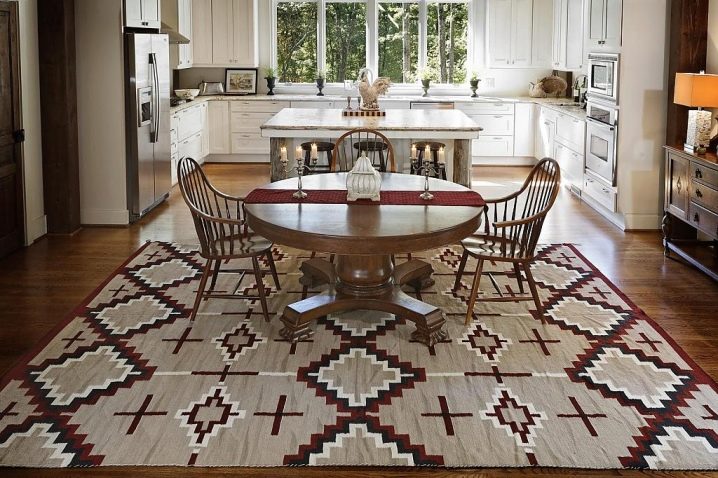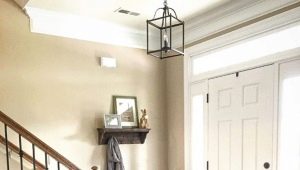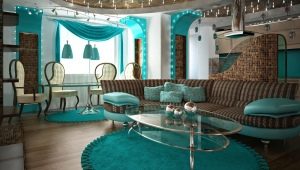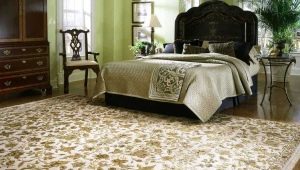Oriental carpets in a modern interior
Since the middle of the last century, carpets have actively gained popularity. But at the beginning of the XIX century, they lost their relevance and began to be considered a relic of the past. Now these products are becoming very popular and relevant again. Most often, carpets are used to create an interior in a modern or oriental style. Oriental carpets are whole works of art, from which sometimes it is impossible to take your eyes off. It is important to know what these products are and how to decorate the interior with them.
Types of products
Today, many modern apartments or country houses are decorated with beautiful carpets in the Oriental style. Classic Oriental carpet is a model made by hand from natural materials. Moreover, such products are made of silk, wool, as well as their combinations and other materials.All oriental carpets are distinguished by a special ornament, each of which is characteristic of an eastern country or region.
Each such product is unique and original in its own way. That is why such carpets are so appreciated.
There are two types of such products:
- floor standing;
- wall mounted.
The first option is usually more dense in texture as it is placed on the floor. It performs not only the role of a decor item, but also a functional element of the interior. The second option, on the contrary, is usually thinner and has a smaller size. Wall products are designed to decorate the interior and make it more perfect. How do oriental carpets are divided according to the type of their creation.
There are oriental carpets:
- self made;
- machine products.
The second option is often made by larger manufacturers, but the models are no less quality.
Such production is due to the introduction of modern technologies in the production sector.
By technology, such products are divided into 3 large groups:
- Pile. When creating them, the Turkish or Persian knot is used.Pile models are rather thick and durable, so they are most often placed on the floor. Moreover, Turkish pile models are characterized by the presence of smooth lines and refined elements in the design, and Persian models are distinguished by geometric prints and the predominance of straight lines and angles.
- Lint free. These are smoother products that are equally expensive. This is due to the fact that they are not so difficult to create, but their appearance is no less presentable. Lint-free models are the most practical and versatile. They are laid on the floor, hung on the wall, and even used instead of bedspreads on beds or sofas. Some use them as a tablecloth for feasts. This is due to their small thickness, as well as a variety of model range. You can choose any such decorative detail for your interior.
- Felted Such products are usually made in each eastern country for their own use, almost no country produces them for export. This is the most ancient traditional type of carpet, which is made of felt.This is a very elegant in design and durable products that create exclusively with their own hands.
Popular manufacturers and styles
Now the widest production of Oriental-style carpets is conducted in Iran, but such products are also produced in Pakistan, India, China and other countries. All these manufacturers are distinguished by the fact that they create beautiful and high-quality handmade products. The carpet from Pakistan is a modern classic of Oriental-style products. The standard of quality and beauty are Persian (Iranian) carpets.
Very many eastern models are valuable works of art. Their patterns or designs are fascinating.
Unusual interweaving lines look very interesting. All such hand-made carpets, regardless of the manufacturer, have a certain meaning, and each ornament has its own meaning. So you can plunge yourself into the world of oriental tales and fill the house with magic. If the oriental carpet is really original and made by hand, it will have one feature: the wrong side and the front side completely coincide in pattern, therefore such products can be turned over.So you can distinguish this oriental products from fakes.
Very popular is eastern kilim. It is decorated with ethnic ornament, which has been preserved since ancient times. Iranian kilims are distinguished by the fact that they depict scarab beetles, stones and a large number of geometric figures. Such products are usually made in red, green, blue or beige shades.
Anatolian Kelim characterized by the fact that when it is created, coarse wool fibers are used. On such products there are images of symbols of fertility and maternity, which are presented in the form of figures of women with hands located on the hips. Also used patterns in the form of lamb horns, which characterize the masculine and the entire stronger sex. The Caucasian kilim is distinguished by decorating the center of this product with an elegant medallion. These models look more presentable and luxurious, they are usually also decorated with eagles, because they are a symbol of courage.
No less beautiful Turkish kilim.
Its initial purpose is to use it as a litter during prayers. Such models are made from coarse and dense fibers.Since during prayer a person was placed in the center, his middle part did not have any ornaments of patterns. It was made of monophonic threads, and the sides were decorated with interesting drawings. But now such a tradition is not always respected, a variety of design Turkish Kilims are produced for export.
Very popular is Turkmen kilim. These products are characterized by the presence of traditional colors: red, blue, brown, sand. The Uzbek and Bashkian kilim can be distinguished by a laconic ornament, which even uses stripes.
Armenian and Arabic Kelim usually characterized by beautiful and fancy patterns, such as floral images, unusual figures of animals and sometimes people. Georgian carpet is characterized by patterns in the form of vines or images in ethnic style.
Also very elegant is considered Dagestan, Bukhara and Berber Kelim. The latter option differs in that it contains certain patterns that are placed in a strict order. So, all the drawings are located in the center and along the perimeter and are made with saturated red threads.
Berber carpets differently called Rabat. The name comes from the city, which is the capital of Morocco, because Rabat is the birthplace of such products. Berber carpet looks more like a carpet. These are very functional and not wide products that have a very small weight. They are easy to care for and clean them. Such products are very bright, because when they are created they use very rich in color threads - orange, yellow, red.
Such carpets are distinguished by an ornament in the form of images of animals or birds. Some products also have abstract geometric shapes in which you can see images of boards or logs. These products are made by hand only. Most often women are engaged in their weaving.
Berber models are created only from natural wool. And women manually comb her fibers. Production technology, even in our time is unchanged.
In the manufacture Azeri, Kazakh and many other oriental carpets use only natural materials, which also paint completely eco-friendly dyes. These include tree bark, leaves, grass, as well as the peel and juice of fruits.The yarn obtained and heated to boiling is dipped in yarn and left for several hours, after which the yarn is allowed to dry in the sun. And after that, from the colored threads, beautiful and unusual ornaments and patterns are created that can hit and bewitch everyone.
Harmonious combinations
Geometric patterns and ornament on the carpet requires some support in the interior of the room. To create a harmonious combination, it is better to use other accessories in oriental style. So, most often these carpets complement the pillows in the eastern style. It is better if such products are not completely identical, but repeating in part the design and color scheme of the carpet.
Pillows are usually wrapped in tight covers made of natural fabrics, which are decorated with beautiful tassels at the tips of corners. Such products are also made to complement accessories in ethnic and colonial style. A beautiful addition to the kilim will be a mosaic laid out on a wall or in another place. Oriental carpets are very harmoniously combined with wooden furniture.
It is better if the furniture items are made only from natural materials.
Also, oriental carpets look great in combination with leather elements. And the most harmonious is considered to be a combination with slightly aged skin. You can also complement the interior in oriental style with wicker elements and accessories. You can arrange in the room with a canvas beautiful baskets.
The oriental carpet can be supplemented with unglazed ceramics and the presence of interesting forged elements in furniture. Metal elements are perfectly combined with such products. They will help to create a home comfort and an atmosphere of comfort. It is best to try to withstand a certain color palette.
Such carpets are usually characterized by the presence of a large number of bright colors, so accessories with extra color solutions will be unacceptable.
All decorative elements, such as bedspread, pillows, carpet and paintings should be made in approximately the same color scheme. But they should not be completely similar in color. Such an interior can be diluted with light neutral tones, such as beige, ivory and others. So you can select the carpet and make it the main central element of the room.
Some seek to create a monochrome room design. In this case, the colors of the carpet should fully overlap with the shades of wall and floor coverings, as well as soft furniture. This combination will not look faded and uninteresting, but will be different riot of colors, albeit monochrome.
Oriental carpets are decorated with brown thread. That is why cinnamon is the most versatile color that will perfectly fit into any oriental style and complement such a carpet. Therefore, it is perfect furniture with brown upholstery and picture frames of the same color. The carpet can be selected both under the upholstery of upholstered furniture, and under the color of the table, wall.
The main thing is to create a general effect of harmonious interior in oriental style.
Recommendations for placement
Most often kilim is placed on the floor. Moreover, its size should depend on the amount of furniture in the room. If you have a lot of free space on the floor where there is no furniture, then you can choose the kilim in size under the free area.
The correct location of the carpet is very important, because with its help you can make the interior visually more spacious and comfortable.In small rooms it is better to put a small kilim. So you can visually expand the space of the room. For large living rooms and other rooms, it is better to select only fairly wide volumetric products, they will give this room luxury and spaciousness.
The traditional is the three options for the location of the kilim.
In the first case, the product is placed between the furniture in the living room. Most often put in front of a sofa or chairs, but the carpet does not fall under them. On such a carpet you can put only a coffee table.
The second option is that all the upholstered furniture is placed on a large carpet, but it comes in no more than half under the furniture. So you can focus on the sofa area and highlight it in the interior.
The third accommodation option is more suitable for larger areas. In this case, the canvas acquire exactly the area of the room and have on it all the elements of furniture. So you can dip the whole interior in an oriental atmosphere. Also the placement of such a product depends on its external qualities. If it is a rather coarse lintless kilim, then it can be laid on the floor.
But if you have an exquisite handmade product without a nap, then you should not lay it in the walk-through areas.It is better to decorate it with a wall or throw it on a bed in the bedroom instead of a bedspread. Do not forget that the kilim must be the central element of the room, therefore it is important to locate it in the very accent zone of the room.
You will learn more about how to choose a carpet from the following video.
